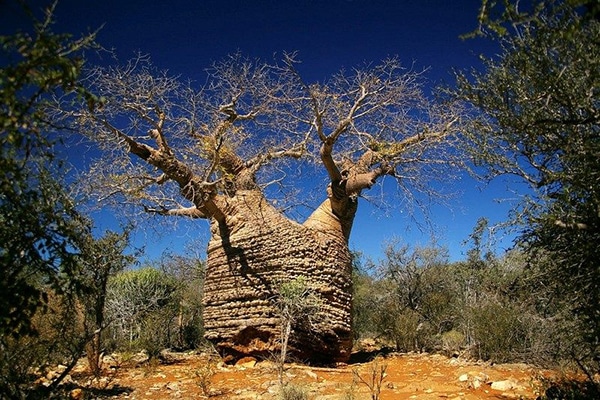The biodiversity of Madagascar offers a unique spectacle where the baobabs stand up, their roots raised towards the sky, seeming to ask forgiveness for their imposing stature which places them at the heart of Malagasy tales and legends. These majestic trees are often revered as symbols of wisdom, reincarnation and perpetuity of life. Their spectacular presence in warm regions of the globe, such as Madagascar, demonstrates their resilience in the face of bad weather and oppressive heat.
Baobabs, also known as “bottle trees”, are giants of nature emerging from the savannahs, resistant to the most extreme climatic conditions. In addition to their impressive stature, these trees offer fruits called “akoussa” or monkey bread, used for food or cosmetic purposes in various regions of the world. Among the countries where these emblematic trees are found, Madagascar stands out with the greatest diversity of species, counting up to 9 varieties in total, 6 of which are endemic to the island.
In Madagascar's biodiversity: The baobab occupies a special place in Malagasy culture, where it is called Renala or Reniala, meaning "mother of the forest". These tropical trees are perfectly adapted to environments characterized by very wet and very dry seasons, losing their leaves during periods of drought and storing large reserves of water in their trunk, sometimes giving them a bottle or balloon shape. balloon.
On average, baobabs reach a height of around 30 meters, although some specimens can exceed 40 meters, with trunk diameters of up to 10 meters. In Madagascar, the most imposing baobab, the “Tsitakakoike”, has a circumference of almost 28 meters. Despite their spongy and not very useful wood, these trees have survived the centuries without being seriously threatened by human exploitation, thanks to their cultural importance and the use of their fruits and sometimes their leaves by many populations.
Baobab trees are also considered sacred in many cultures, acting as silent witnesses to human history. Traveling the trails of the West and South of Madagascar, they can often be seen draped in pieces of red and white fabric, thus marking their cultural importance. In addition to their physical presence, these mythical trees are often associated with supernatural powers, further enhancing their mystical aura.
Madagascar's biodiversity, particularly with regard to baobabs, includes an impressive variety of species, each with their own unique characteristics and specific ecological role. Among the most remarkable species, we find the Adansonia digitata L., commonly called the African baobab, the Adansonia grandidieri, or Grandidier's baobab, and of course the Adansonia madagascariensis, representing the emblematic baobab of Madagascar, symbol of its wealth natural and its exceptional diversity.






Comment (0)